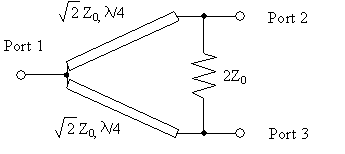yuvalkesi
Member level 5
Hi,
A simple basic question.. What is the loss when going thru a wilkinson power divider?
I think it's 3dB (because the power splits by 2), but someone told me it's not correct and it's about 7dB... I don't understand why.
Thanks guys,
Tom
A simple basic question.. What is the loss when going thru a wilkinson power divider?
I think it's 3dB (because the power splits by 2), but someone told me it's not correct and it's about 7dB... I don't understand why.
Thanks guys,
Tom
